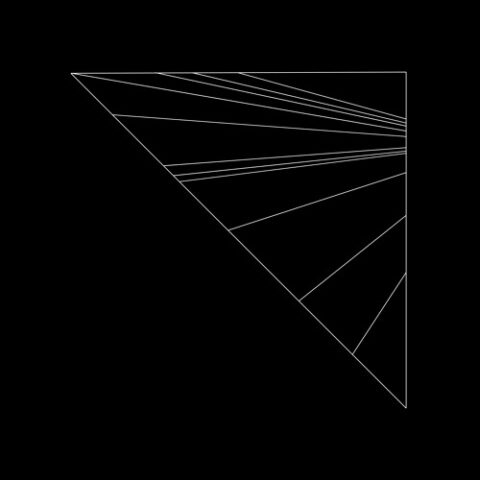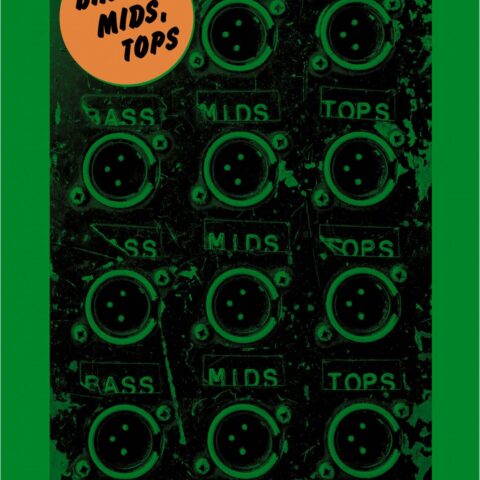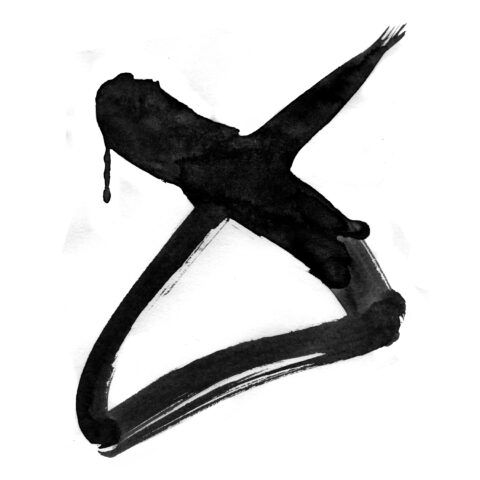When I first heard Especies de Basilea by Tomás Cabado, Sergio Merce and Catriel Nievas -composed by Cabado- , I felt immersed in an enclosed space in which the stream of sounds that it projects, brought warmth and comfort to this dark sonic container they created. There was a certain sense of intimacy and immersion that I experienced listening to this work, that captured my attention and led me to write this text about this work.
As a researcher and curator, I am usually interested in works in which the creative process and the outputs, are interconnected. My encounter with these works considers the process as an aesthetic element in itself in which the relationship between the artist and the material of their work suggests tensions, questions, dialogues, narratives and ways of connecting with the world. These works usually involve field recordings and the appropriation of methodologies from ethnography or bioacoustics where the creation surges in the relationship between the artist and its sonic organic environment. However, this was not necesarelly the case with Especies de Basilea, an album whose material aspects emphazise in the text (score)as a sediment. To establish a point of connection between this work and my subjectivity as a listener, I connected my sensible experience with the theories of Didier Anzieu. The sonorous envelope idea of psychoanalyst Didier Anzieu(1) considers the skin an essential component of the structures of the mind, rooted in the earliest gestation stages and the first contact with sound, and the affection that resonates through the mother’s voice swaddling the child in a sonic container that supports the development of the ego in the first years of life.
The vector present in every score towards a realization that is based on that writing, a vector that is the sediment of the use of the score, gives the score the possibility of also establishing new existences: weaving a matrix (or a clipping of the infinite fabric of sounds, acts and even words) from which something can happen or “be happened”, actualized. Thus the score turns to poetry.
– Liner notes from Especies de Basilea. Tomás Cabado (2)
In this article I will develop an “inter-review” or mode of writing about music which is in itself a critic to the figure of “the review”. As a researcher I prefer to lend the pen to the artist and just try to encourage interesting reflections about matters that connect us. My opinion presented in terms of value judgements or descriptions, are no longer something that I find relevant in these kinds of notes. “Especies de Basilea” present a warm and mysterious experience, where time fluctuates at indecipherable paces creating spaces and suggesting forms of great revelation. The low frequencies heard here, create an interesting body/resonant space connection in which, as a listener, I feel fully immersed, and which became the center point of my questions to Tomás, the composer of these pieces.
 [Cabado, Merce, Nievas]
[Cabado, Merce, Nievas]
Q (DV) In “Música y realidad: hasta el concepto de música absoluta” you wrote that the musical experience is located in the outside opening the hearing as much as the mother’s voice. This reminded me of Didier Anzou, the french psychoanalyst, who in his thesis present the skin as an essential component of the structures of the mind rooted in the earliest stages of gestation and first contact with sound. For him, the affection that resonates through the mother’s voice that enfolds the child in a sonic container that supports the development of the ego through the first years of life.
With this in mind, how does the idea of absolute music connect with the composition of Especies de Basilea?
A (TC) Since the first question opens a deep problem, I would like to say something before answering specifically. If I have theoretical interests, very humble interests in the sense that I do not worry much about whether they affect current discussions or not (whatever they may be), if I have those interests it is not because I need them for my practice as a musician. This is: I write and make music – and I think we share this with Catriel and Sergio – not because I think things. Between what I do at the theoretical level and what I do as music, at least I do not find a correspondence relationship that is more than a very general one.
That said, the article you mention is a fairly elementary investigation of the concept of reality for Western music of the written tradition. The emphasis is placed on the idea of absolute music because it is the one that corresponds to a conception of music split from meaning, from all mediation with reality. I am interested in this problem: how is something represented to us in music, and how music participates in the world. I think about the problem of the inside-outside in this sense: that “threatening outside” that is the proliferation of sound opens up for a subject, and this experience begins to found subjectivity. Nothing very new: “if the outside wasn’t inside, it wouldn’t be an outside.” Basel species could be absolute music if you stand in this position: these sounds don’t mean anything to me. And it’s okay, there really isn’t a will to mean this or that thing … But this is saying little and nothing. The category of absolute music is from another era; I don’t think it helps us to think about what we are doing. It does help me to think about this problematic relationship between music and reality. Now, is any of that problem perceived when listening to this piece? I don’t believe.
Q (DV) Considering your idea of absolute music and Dider Anzou ideas, in which way would you say that the initial listening experience with the voice of the mother which is nourished by sound, is transformed by the cultural dominance of visuality at birth and later by language? Does this question connect in some way with your work?
A (TC) I don’t think that the mother’s voice comes first, and then comes the “most nurturing” sound that comes from the world. One hears from the insides of other, before being able to say “I” or to see oneself in a reflection. From inside this other I listen to an outside, I listen to the other, and what I am is not different from what contains me, from what I am separated from at birth, etc. From that waiting instance (the one who waits is the one who contains me), not only the other is more than me, but the other is more me than me (Mom is my interpreter, the others do not know about me except through she). From now on, getting out of there is going to change everything, to the encounter with another outside and with other others. But I am not at all holding a primal experience of listening. As for my musical work, honestly this has nothing to do with it but on an extremely general level.
 [Tomás Cabado]
[Tomás Cabado]
Q (DV) British sculptor Antony Gormley, approaches the body as a place rather than an object and for him, in darkness, the boundaries between body and space vanish which is similar to what happens in the womb. Do you suggest any luminical conditions to listen to “Especies de Basilea”? Would you say that listening to this album in headphones or speakers makes any significant difference?
A (TC) I would just say that Sergio and Alan Jones did an impressive job of mixing and mastering. And that the sound of the album, I feel, is worth listening to, it is not a subsidiary element of the music. I feel like with Catriel we have sounds that seem very similar mostly because the materials are so similar, but when you listen for a long time, we couldn’t be more different in how we approach something as simple as a repeated note. And Sergio manages an extreme palette here, he opens planes that widen the space in all directions. That said, I would only say that this album is worth listening to in the best conditions you can afford.
Q (DV) I noticed that throughout the album you have moments of great vibrance with emphasis on low immersive frequencies. These create interesting tensions between the body and the space. Is that something that was done deliberately?
A (TC) I think this is the effect of what I just mentioned about Sergio. It is his choice as a performer to use those sounds, and I think that because of how he handles it during the recording, the effect he has is to make one feel form as place, time as habitat. And of course, the body will be addressed there.
Q (DV) You speak about the “sediment of the use of the score” which I find quite a poetic idea, can you elaborate a little further about this?
A (TC) I imagine that the experience of playing a score appears to our common sense as “following rules”, “deciphering a code”, “rebuilding the image”, etc. But I like to think of it as following the traces of what is written. I think that all the people who are serious about playing written music care in one way or another to understand the conditions of possibility of that writing, the time in which it occurred, the dialogue that it maintains with other writings … But it is also very true that playing a piece leaves marks on future performances. That could be the sediment of the use of the score: what is left by passing through it again and again. There are marks that remain in the materiality of the score (marks of use, the passage of time, the “damaged” paper) and others that affect what is written on the score. I think that, although not every interpretation changes the direction of a piece, they all leave a remainder, a sediment.
Q (DV) In the liner notes of the album you say “This music was written, which does not mean that it was composed. Its writing is a field of possibilities and what sounds is the discovery of them”. Can you tell us about the writing that led to this performance and how diffuse and open (or direct and implicit) was the information given to the performers by you?
A (TC) Species of Basel is made up of a series of musical statements, thought as counterpoints, simultaneous melodies in the manner of the old musical pedagogy. The so called counterpoint by species, in fact, the simplest species: each note corresponds to another. What is “composed” there is in fact very elementary, practically nothing that is heard sounds as image and likeness to the score. What I did with that was to propose a way of reading the piece that would allow each one to choose these notes and distribute them over time with some independence from the others, without stopping the joint reading, advancing in a more or less even way between the three of us. The idea was always to make a slow reading of the pieces to be able to anticipate the notes that follow and concentrate more than anything on listening to what others are doing. In that sense, I would say that it is not a diffuse piece, but it is open. And that it is not an explicit piece, but it is direct.
Q (DV) How was this album recorded in terms of the disposition of the performers in the space?
A (TC) The three of us recorded quite close to each other, in Catriel’s little room in the west of Buenos Aires. The biggest challenge must have been mixing Sergio’s instrument, the EWI; because of that arrangement, the sound went in through our amp’s microphones as well.
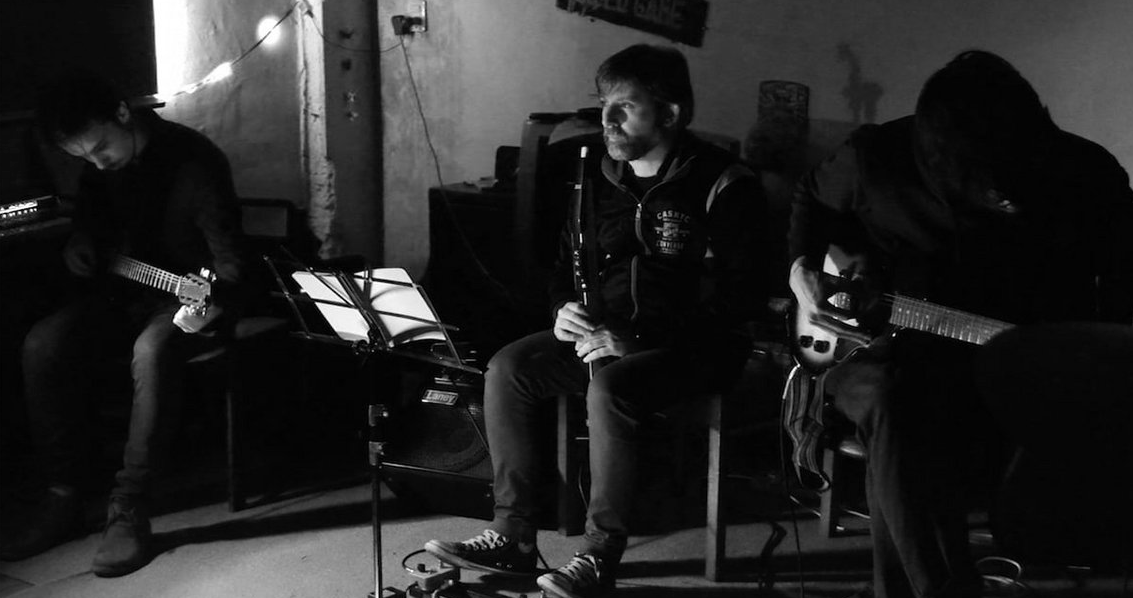 [Cabado, Merce, Nievas]
[Cabado, Merce, Nievas]
Q (DV) In which way your presence as a composer/performer might have influenced Merce and Nievas’ performance?
A (TC) With Sergio and Catriel we were already playing for a while, in fact, Catriel and I had already recorded an album with my music that came out on Wandelweiser Records in 2019. They both have very defined personalities as performers and improvisers, so in that sense no I think I have been an influence at all. After I raised the basic operation of the score, we did spend time understanding how to play it, myself included, and it was a fruitful job because we also took the opportunity to play it live a few times, at the same time we recorded it.
Q (DV) In a recent article in The Wire, which I know you read and have strong feelings about, Mark Fell and Rian Treanor writes about the relation between the score and music,
“What we’re reading here isn’t music. Like, a cookbook isn’t food, is it? Why do we say this is music? We’re not looking at music right now. We’re looking at some instructions to make music. There’s a mistake there isn’t there”. -MF
What are your thoughts about Mark Fell (and Rian Treanor) ideas about the score?
A (TC) I think if you read the comments to that note on The Wire’s website, it is very clear how discredited the position of the two is. I don’t think what they think about scores deserves much comment, because they themselves say that they don’t know anything about scores and that they don’t work with that. It does seem to me ignorant at a more general level to think that one works directly on the matter, to take such an assertion literally, to pretend that there can be no mediation with respect to sound. Saying that the score is not the music is not far from saying that the waveform is not the sound. Again, this says nothing, does not provide any insight into the music. Rather, it ignores that writing is imbued in every idea of composition, of the privilege of one decision over another in creation, and that writing is not reduced to symbols on paper, even when that’s its materiality.
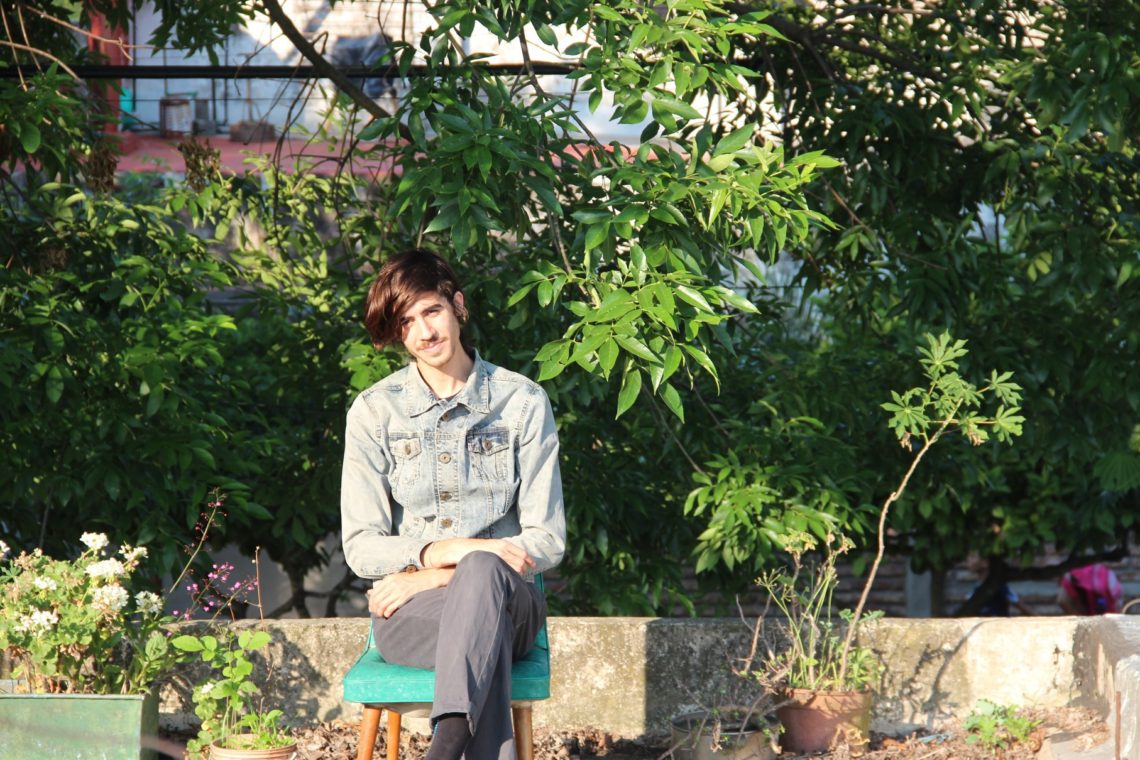
Q (DV) Sound artist Mark Peter Wright expresses that the observer-subject dynamic in artmaking is problematic, reducing the practice to a matter of conservation or composition. British composer, Yolande Harris, argues, in regard to Pierre Schaffer’s reduced listening and Murray Schafer acoustic ecology,
“On one extreme there is the tendency to deny the environmental source of the sonic material used in composition (Schaeffer) and at the other extreme to deny the displacement and artificiality of the recorded environment when played back out of its original context (Schafer). However, both ask the listener to train their musical ear on a natural soundscape. This musical approach leads to the question, is there such a thing as an ‘unedited’ field recording? Even creating the most basic recording involves an editing process, including choosing the location and time of recording, a choice of microphones and their placement, followed by the subsequent selection of a specific section, and even such minimal studio edits as crossfades between each recording. The use of compositional choices means that even in the most ‘raw’ field recordings, the boundaries between presentation and composition are questionable.”
– Yolande Harris
How do you feel about the seemingly impossible vanishment of the mediation of the artist between environmental acoustic possibility and sound art and music pieces?
A (TC) It is as if the music had bypassed that problem from the beginning, at its own two extremes. Both the music that defines its own image to be reproduced with exactitude and that music more open to contingency, neither tries to capture for itself a “wild” material, in the sense of immaculate. In music there is no function of extracting an original case for its replication, falsification or masking. I doubt that what Pierre Schaeffer asked was “natural listening”. What he asked for is a level of abstraction regarding the meaning and associations of what is heard, which is on the same level as a musical language. What happens is that he intended to extend musical listening (not that there is one musical listening, he intended to extend his own) to everything that sounds. This is the obligation of music, from which it cannot escape: it can only produce music, it cannot reproduce anything else. Either I listen to something like music or I listen to it as something else, I can’t hear both things simultaneously. We learned that from Peter Ablinger. Therefore, what art can do will always be at the level of mediation. Never directly on the level of “reality”. Lately I have been very attentive to what certain theorists have to do to justify an idea of raw, real sound material, an idea of immanent nature. Very often these things go “against the music” because they say that music tames the natural power of sound. Because instead of frequency, the music says “notes, chords, intervals”. As if saying “frequency” were not also a dissection of the power of sound, a domestication for the benefit of a positivist, scientific language …
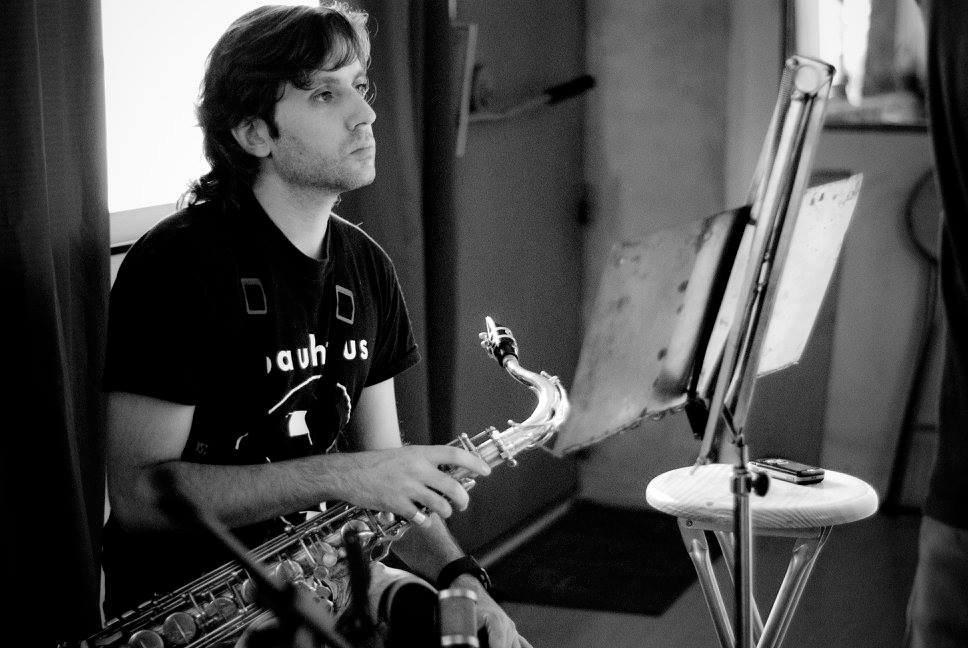
[Sergio Merce]
Q (DV) How important is it for the listeners to read your liner notes in order to nourish their experience? Are you interested in the subjective, and intuitive reaction of the candid listener?
A (TC) Ah! I don’t think that what I have written in the notes on the album is anything important, I just wanted to add my point of view on the making of this specific piece. And at least I’m not in a position to demand a kind of listening. Even inadvertent listening is valuable. Informed, innocent, indifferent, excited, solemn or commented, any listening is worthy.
Q (DV) In regard to a Latin American identity in new music, how the geographical, cultural and political context in which this album was conceived and composed, is relevant in its conception and output?
A (TC) First, it should be said that there are three places where this music was conceived: the score was written in Switzerland in 2019, during a residency I did there; the album was released in the United States by Marginal Frequency, Alan Jones’s label; and the recording was made in the west of Buenos Aires, in Catriel’s studio. I feel – but it is difficult for me to establish this generality – that these modes of music circulation can be quite normal in the context of local experimental music: some musics find a more appropriate curatorial space on foreign labels, but they are produced with the tools we have here and now. The experimental music listening community in the world is already small, and for anyone who is attentive to these types of releases, it will not be contradictory that a music made in Argentina is published elsewhere. As for Latin American identity, we have talked about it a lot on another occasion: perhaps in this case it is reduced to a heterogeneous way of doing things, to a particular relationship of the “periphery” with the “center”. Right here in Buenos Aires that problem is present: there are intense communities of experimental music on the outskirts of the city, but the focus seems to be on the capital, where foreigners land, where the few spaces of relative visibility for this music are disputed. We record this music in the periphery, and we also play it there, as well as in the capital. In my opinion, in addition, in these years there is a vector that pulls towards the institutionality of this music (in part in universities, in part in state exhibition venues), it remains to be seen how it results. It will surely not be like in Europe. But anyway, I don’t think there is an identity to assimilate to. There are many things which one can identify with, who knows to what extent from one’s own will, and with that, put together the mosaic of what one considers oneself as an artist.
Link
https://marginalfrequency.bandcamp.com/album/especies-de-basilea
………………………………………………………………………………………………………………………………………………………………….



